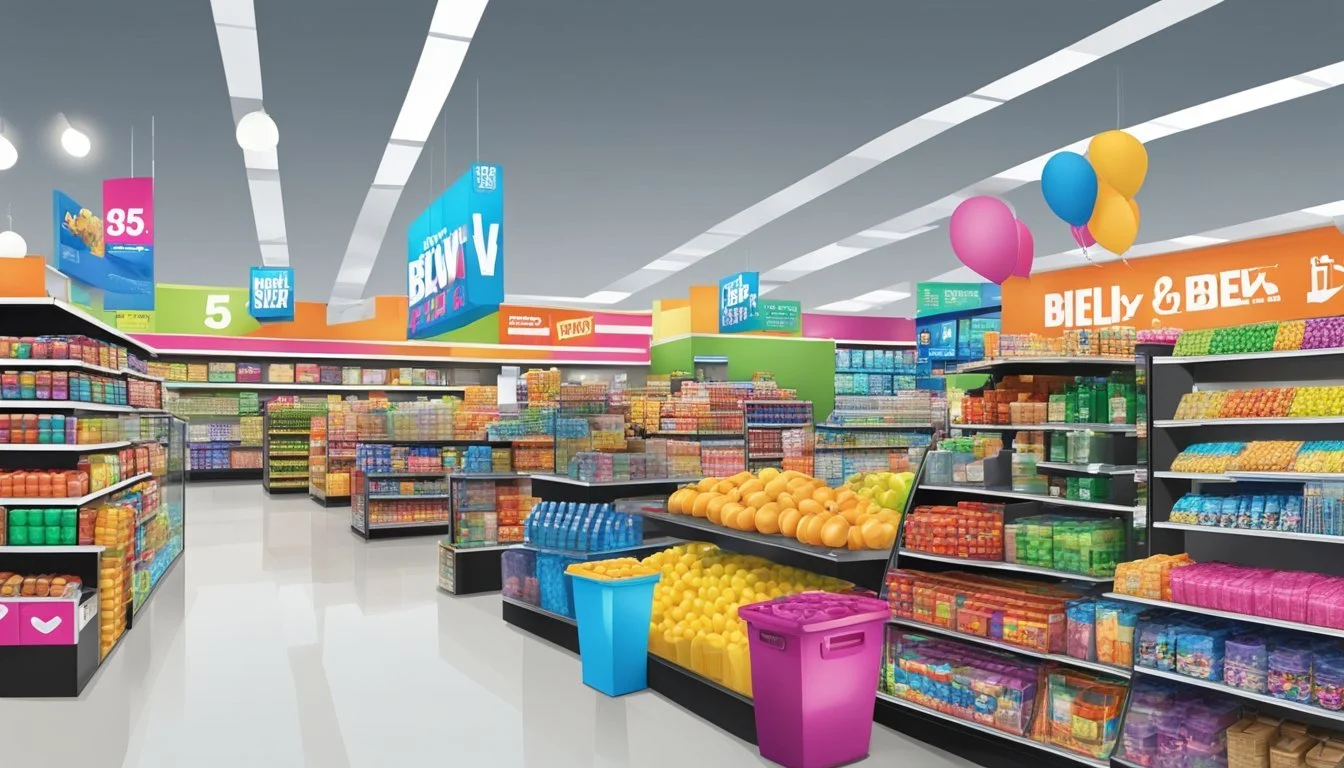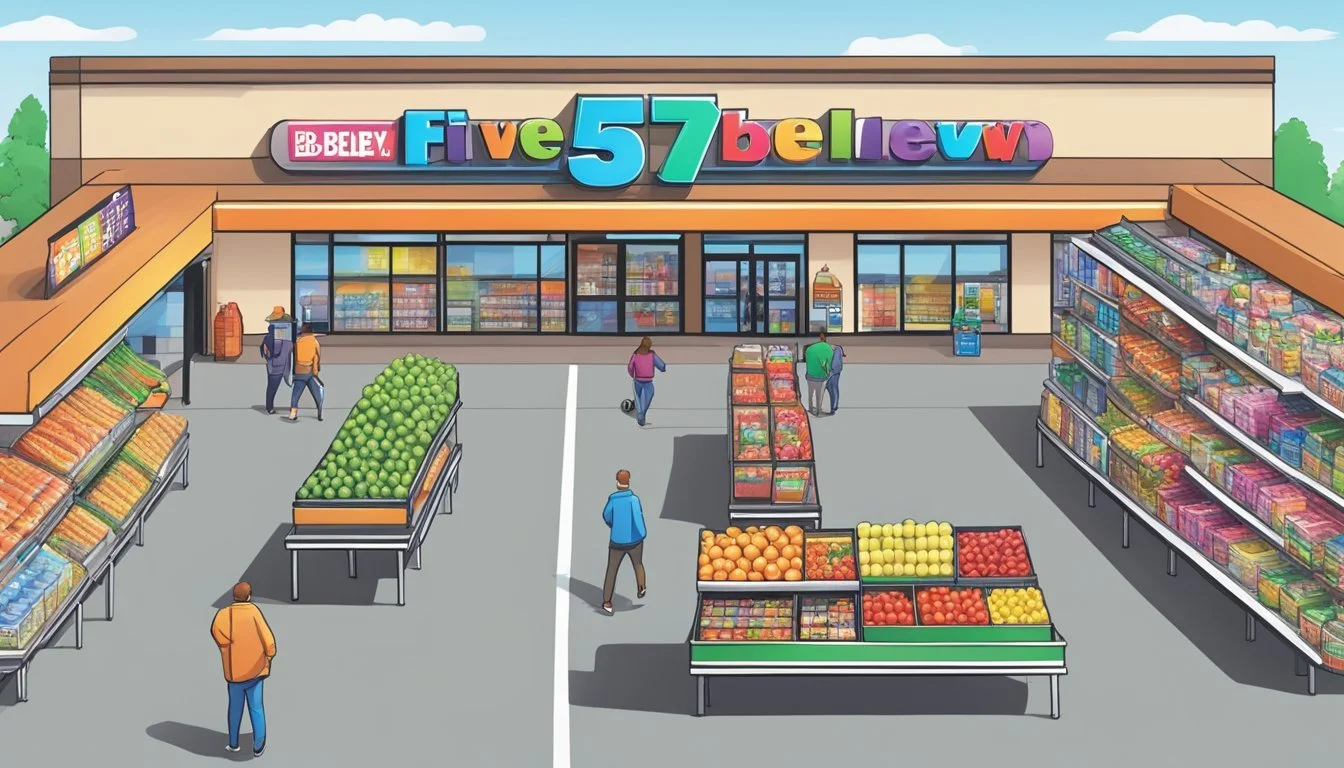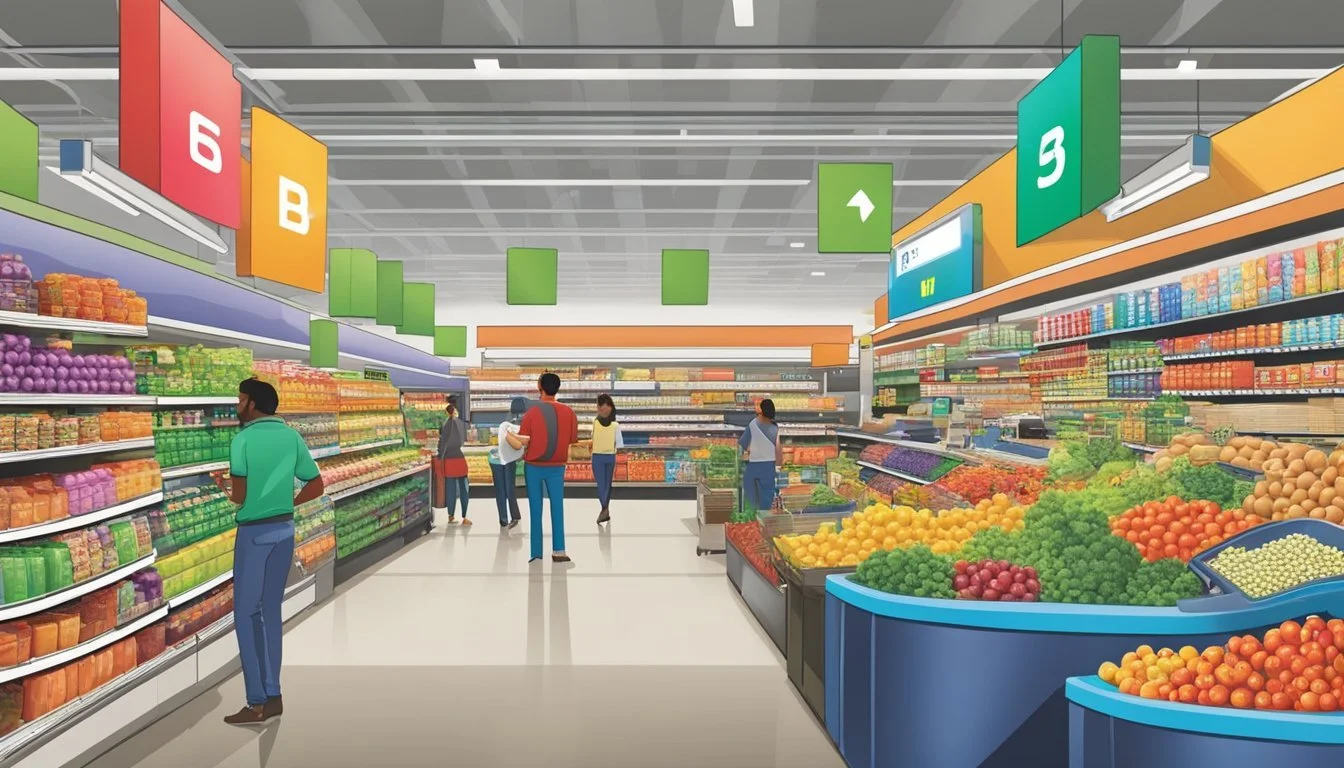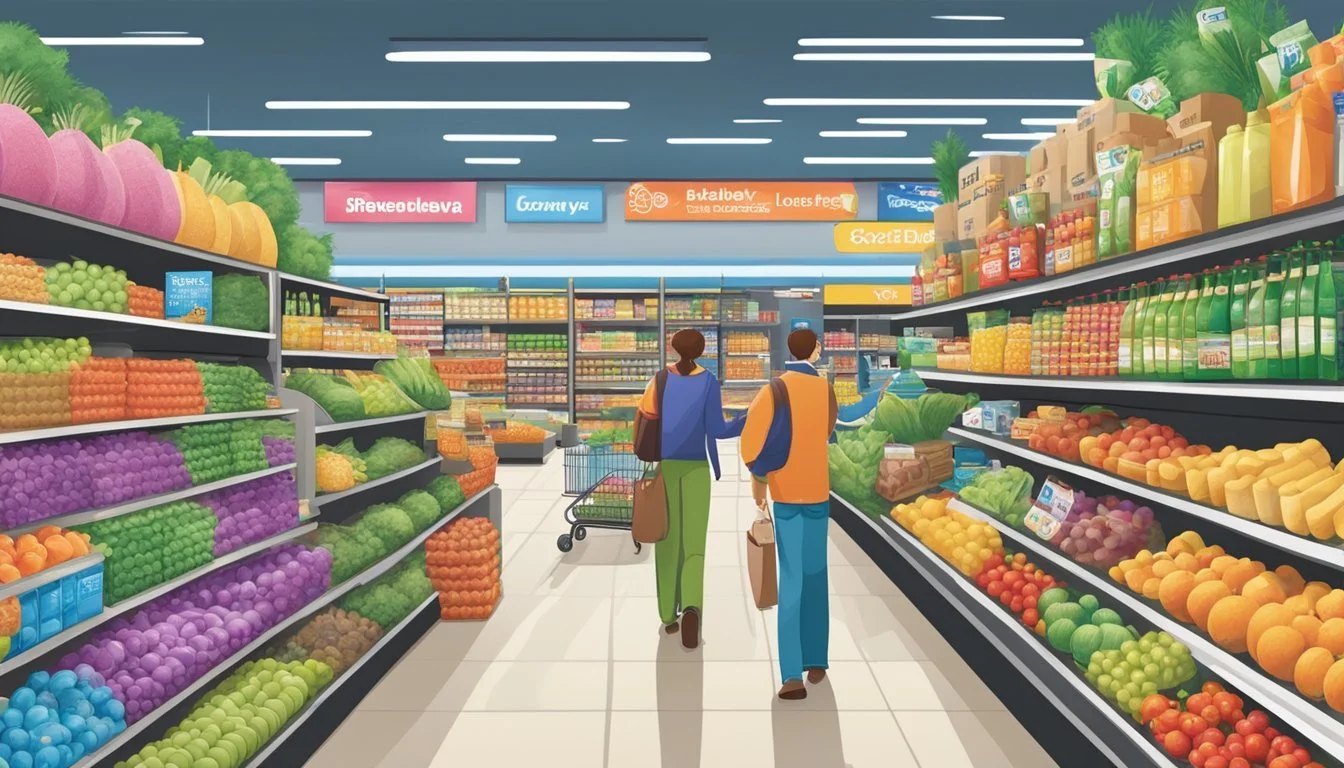Five Below vs Lucky Supermarkets
A Comprehensive Comparison of Budget Shopping Options
When it comes to grocery shopping, choosing the right store can make a significant difference in your budget and overall experience. Five Below and Lucky Supermarkets are two distinct retailers that cater to different consumer needs.
Five Below is primarily known for its bargain-priced merchandise, offering a variety of products at $5 or less. While it's not a traditional grocery store, Five Below does stock some food items and snacks. Lucky Supermarkets, on the other hand, is a full-service grocery chain that provides a wide range of fresh produce, meats, dairy, and pantry staples. For comprehensive grocery shopping, Lucky Supermarkets is the better choice due to its broader selection of food items and household essentials.
The decision between these two stores ultimately depends on individual shopping needs. Five Below may be suitable for quick snack runs or budget-friendly non-food items, while Lucky Supermarkets offers a more complete grocery shopping experience with a focus on fresh foods and everyday necessities.
History and Overview of Five Below and Lucky Supermarkets
Five Below and Lucky Supermarkets emerged as distinct retail concepts in different eras, catering to unique customer needs. Both companies have shaped the retail landscape through their innovative approaches and expansion strategies.
Founding and Expansion
Five Below was founded in 2002 by Tom Vellios and David Schlessinger in Philadelphia. The duo conceptualized the idea in a local coffee shop, aiming to create the ultimate brand for kids and teens. Five Below rapidly expanded, focusing on offering trendy products at affordable prices.
Lucky Supermarkets, on the other hand, has a longer history dating back to 1935. Founded in San Leandro, California, Lucky started as a homegrown answer to Safeway. The grocery chain initially clustered its stores in Oakland and other East Bay locations.
Lucky pioneered the transition from small stores to supermarkets. In 1947, they opened a flagship store in San Leandro, featuring a coffee shop and other innovative amenities for the time.
Target Demographic and Store Philosophy
Five Below targets tweens, teens, and young adults with its diverse range of products priced at $5 or less. The store philosophy revolves around offering trendy, quality items at accessible price points, creating a fun and vibrant shopping experience.
Lucky Supermarkets focused on providing value to families and individual shoppers. As an innovative grocery chain, Lucky embraced the concept of self-service shopping when it was still new. This approach allowed customers to browse and select items themselves, a departure from the old system of providing grocery lists to clerks.
Lucky's philosophy centered on convenience and affordability. The supermarket chain aimed to offer a wide range of products to meet diverse customer needs while maintaining competitive prices.
Product Range and Quality Comparisons
Five Below and Lucky Supermarkets offer distinct product selections catering to different consumer needs. Their offerings vary significantly in terms of fresh foods, prepared items, and brand availability.
Fresh Produce and Meat Offerings
Lucky Supermarkets provides a wide array of fresh produce and meats. Their produce section features seasonal fruits and vegetables, with an emphasis on locally sourced options when available. The meat department offers various cuts of beef, poultry, and pork, as well as seafood selections.
Five Below, being a discount retailer, does not typically stock fresh produce or meats. Their food offerings are limited to packaged snacks and non-perishable items.
Prepared Foods and Generic Staples
Lucky Supermarkets carries a range of prepared foods, including hot deli items, salad bars, and ready-to-eat meals. They also stock a comprehensive selection of generic staples like canned goods, pasta, and baking essentials.
Five Below's food selection is more limited, focusing on packaged snacks, candies, and some non-perishable pantry items. They do not offer prepared foods or a full range of generic staples.
Brands and Specialty Items
Lucky Supermarkets stocks a mix of national brands, regional favorites, and their own store-brand products. They often carry specialty items catering to diverse dietary needs and preferences, such as gluten-free, organic, and international foods.
Five Below primarily offers lesser-known brands and discount versions of popular snacks. Their specialty items are limited to novelty candies and unique snack flavors. The store does not typically carry a wide range of specialty dietary items.
Pricing Strategies and Cost Efficiency
Five Below and Lucky Supermarkets employ distinct pricing approaches to attract customers and maximize profitability. Their strategies encompass everyday low prices, targeted discounts, and membership programs designed to offer value.
Everyday Low Prices and Discounts
Five Below maintains a straightforward pricing model, with most items priced at $5 or less. This consistent low-price strategy appeals to budget-conscious shoppers seeking affordable goods. The retailer occasionally offers select items at even lower price points, such as $1 or $3, to drive traffic and boost sales.
Lucky Supermarkets, in contrast, uses a competitive pricing strategy. They aim to match or beat local competitors' prices on common grocery items. Lucky also runs weekly sales and promotions, featuring discounted prices on seasonal products and popular brands.
Both stores utilize loss leaders - items sold at or below cost - to attract customers. Five Below might offer trendy accessories at rock-bottom prices, while Lucky could discount staple items like milk or eggs.
Comparison of Common Items
When comparing everyday essentials, Lucky Supermarkets typically offers lower prices on fresh produce, meat, and dairy products. Their bulk purchasing power allows them to negotiate better deals with suppliers.
Five Below excels in non-food categories:
Snacks and candy: $1-$5
Basic kitchenware: $3-$5
Stationery and school supplies: $1-$5
Seasonal decor: $1-$5
Lucky Supermarkets' prices on similar non-food items are often higher, but they provide a wider selection and national brands. Their focus remains on groceries:
Fresh fruits and vegetables: Competitive market prices
Milk (gallon): $3-$4
Bread: $2-$4
Eggs (dozen): $3-$5
Savings Programs and Memberships
Lucky Supermarkets offers a free loyalty program that provides exclusive discounts and personalized offers based on shopping history. Members earn points on purchases, which can be redeemed for discounts on future shopping trips.
Key features of Lucky's rewards program:
Digital coupons
Birthday rewards
Fuel points (where applicable)
Member-only pricing on select items
Five Below does not currently offer a formal membership program. Instead, they focus on maintaining consistently low prices across their inventory. The retailer does provide email newsletters with special offers and new product announcements to keep customers engaged.
Both stores leverage their websites and mobile apps to promote deals and enhance the shopping experience. Lucky's app allows for digital coupon clipping and list-making, while Five Below's online presence showcases new arrivals and trending items.
Store Locations and Convenience
Five Below and Lucky Supermarkets have distinct geographical footprints and accessibility profiles. Their store locations and convenience factors play a crucial role in shaping the shopping experience for customers.
Geographical Distribution
Five Below operates over 1,300 stores across 42 states in the United States. The chain has a strong presence in major metro areas and suburban locations. Its expansion strategy focuses on high-traffic shopping centers and strip malls.
Lucky Supermarkets, on the other hand, has a more limited geographical reach. The chain primarily serves Northern California, with a concentration of stores in the Bay Area. Lucky's footprint is significantly smaller than Five Below's national presence.
Accessibility and Shopper Traffic
Five Below stores are typically situated in easily accessible retail hubs. Many locations are near big-box retailers like Target and Walmart, benefiting from the foot traffic these anchor stores generate. The chain's stores are often found in shopping centers with ample parking.
Lucky Supermarkets tend to be located in neighborhood centers and community shopping areas. This placement strategy aims to serve local communities conveniently. Lucky stores are often larger than Five Below locations, providing more space for grocery shopping.
Both chains prioritize locations with good visibility and easy access from main roads. However, Five Below's wider distribution makes it more convenient for shoppers across the country, while Lucky Supermarkets cater specifically to Northern California residents.
Customer Experience and Service
Five Below and Lucky Supermarkets offer distinct shopping experiences. Both stores prioritize customer satisfaction but differ in their approach to service, store environment, and feedback mechanisms.
Checkout Efficiency and Staff Friendliness
Five Below emphasizes quick transactions with self-checkout options in many locations. Staff members are typically young and energetic, creating a casual atmosphere. They offer basic assistance but may lack in-depth product knowledge.
Lucky Supermarkets focuses on personalized service. Checkout lines are often staffed by experienced cashiers who efficiently handle groceries and engage in friendly conversation. Many stores feature both traditional and self-checkout options to cater to different customer preferences.
Wait times can vary at both retailers during peak hours. Five Below's smaller product range generally leads to faster checkouts, while Lucky Supermarkets' larger inventory may result in slightly longer wait times.
Cleanliness and Store Environment
Five Below maintains a vibrant, colorful store design aimed at younger shoppers. Aisles are typically wide and well-lit, with clear signage. The budget-friendly nature of the products sometimes leads to cluttered displays during busy periods.
Lucky Supermarkets prioritizes a clean, organized shopping environment. Regular cleaning schedules ensure tidy aisles and sanitary conditions in fresh food areas. The stores often feature wider aisles to accommodate shopping carts and create a more spacious feel.
Both retailers strive to maintain cleanliness standards, but Lucky Supermarkets generally provides a more polished appearance due to its focus on food products and perishables.
Customer Satisfaction and Feedback
Five Below utilizes social media platforms to gather customer feedback and respond to concerns. They often run promotional campaigns encouraging customers to share their experiences online.
Lucky Supermarkets employs traditional feedback methods such as in-store surveys and comment cards. They also maintain active social media profiles for customer engagement. Many locations have dedicated customer service desks to address issues promptly.
Both retailers track customer satisfaction metrics, but Lucky Supermarkets tends to have more comprehensive feedback systems due to its larger size and broader product range. Independent surveys often rank Lucky Supermarkets higher in overall customer satisfaction compared to discount retailers like Five Below.
Marketing Strategies and Brand Image
Five Below and Lucky Supermarkets employ distinct marketing approaches to attract shoppers and build their brands. Their strategies encompass advertising, promotions, and efforts to foster customer loyalty.
Advertising Campaigns and Promotions
Five Below focuses on vibrant, youth-oriented marketing campaigns. Their ads often feature trendy products and eye-catching designs to appeal to younger shoppers. The company leverages social media platforms like Instagram and TikTok to showcase new arrivals and limited-time deals.
Lucky Supermarkets takes a more traditional approach, emphasizing value and community connection. They utilize local radio spots, newspaper inserts, and targeted mailers to reach their customer base. The supermarket chain frequently runs weekly specials and seasonal promotions to drive foot traffic.
Both retailers use loyalty programs to incentivize repeat purchases. Five Below's rewards app offers exclusive discounts, while Lucky Supermarkets provides digital coupons and personalized offers through their membership program.
Brand Loyalty and Public Perception
Five Below has cultivated a fun, affordable brand image that resonates with teens and budget-conscious adults. Their $5-and-below pricing strategy creates a treasure hunt atmosphere, encouraging frequent visits to discover new items.
Lucky Supermarkets positions itself as a neighborhood grocer with strong community ties. They sponsor local events and support charitable causes to build goodwill. This approach has helped foster a loyal customer base, particularly among families and long-time residents.
Customer reviews suggest that Five Below shoppers appreciate the store's unique product mix and low prices. Lucky Supermarkets customers value the fresh produce selection and personalized service.
Both brands face challenges in an increasingly competitive retail landscape. Five Below must continually refresh its merchandise to maintain shopper interest. Lucky Supermarkets needs to balance traditional values with modern conveniences like online ordering to attract younger consumers.
Comparative Analysis of Industry Impact
Five Below and Lucky Supermarkets have distinct influences on the retail landscape. Their unique approaches to product offerings and market positioning shape their roles in the grocery and discount store sectors.
Market Presence and Variety
Five Below operates as a specialty discount retailer, focusing on products priced at $5 or less. Its stores typically occupy 8,000 to 10,000 square feet and offer a wide range of non-food items. The chain targets young shoppers and bargain hunters with trendy merchandise across various categories.
Lucky Supermarkets, in contrast, is a full-service grocery chain. Its stores are larger, often exceeding 50,000 square feet. Lucky provides a comprehensive selection of fresh produce, meats, dairy, and pantry staples. The supermarket emphasizes competitive pricing and caters to families and regular grocery shoppers.
Contribution to Food Retail Sector
Five Below's impact on the food retail sector is limited. The company occasionally offers packaged snacks and beverages but does not compete directly with traditional grocers. Its influence lies more in capturing discretionary spending that might otherwise go to supermarkets' non-food sections.
Lucky Supermarkets plays a significant role in the food retail landscape. As a full-service grocery chain, it contributes to market competition and influences local food prices. Lucky's focus on fresh products and staples makes it a key player in meeting daily consumer needs.
The chain's variety and pricing strategies affect overall market dynamics in the areas where it operates. Lucky's presence can impact smaller grocers and specialty food stores in its vicinity.
Future Challenges and Opportunities
Five Below and Lucky Supermarkets face evolving retail landscapes. Both must navigate technological shifts and changing consumer preferences to remain competitive in the coming years.
Technological Advancements and Online Shopping
Amazon Prime has set new standards for e-commerce convenience. Five Below and Lucky Supermarkets need robust online platforms to keep pace. Mobile apps, digital coupons, and seamless checkout processes are becoming essential.
Five Below can leverage its appeal to younger shoppers through social media integration and gamified shopping experiences. Lucky Supermarkets may focus on perfecting online grocery ordering and delivery services.
Both retailers should explore AI-powered inventory management and personalized marketing. These technologies can optimize stock levels and tailor promotions to individual customers.
Adaptation to Consumer Trends and Preferences
Health-conscious consumers seek fresh, organic, and locally-sourced products. Lucky Supermarkets can expand these offerings to attract this growing market segment. Five Below might introduce more eco-friendly and wellness-oriented items to its product mix.
Researchers note a rising demand for convenience foods and meal kits. Lucky Supermarkets could develop private-label ready-to-eat options. Five Below may explore partnerships with popular snack brands to offer exclusive flavors or packaging.
Both retailers should consider sustainability initiatives. Reducing plastic packaging and supporting ethical sourcing can appeal to environmentally-conscious shoppers.






